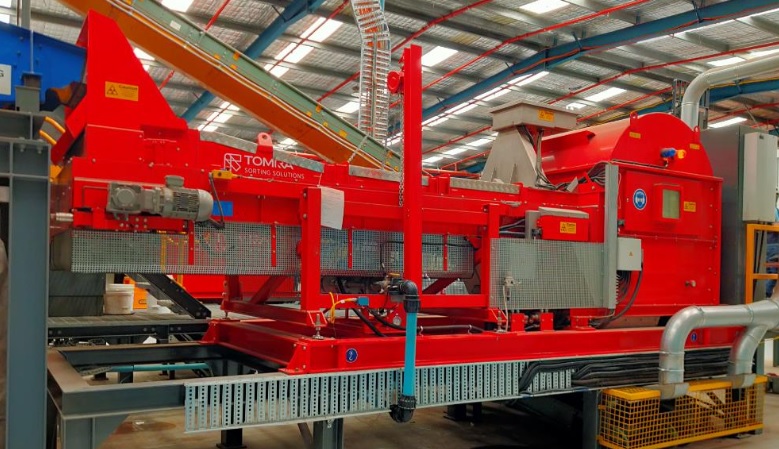TOMRA’s X-ray Transmission (XRT) ore sorting innovation has another positive industry reference to hand after Hastings Technology Metals said off-the-shelf technology had proven extremely effective at removing dilution on samples used in the testing program at its Yangibana rare earths project in Western Australia.
Testing on a 1.8 t sorted bulk sample had seen a 95.1% recovery of contained Nd2O3+Pr6O11 (neodymium and praseodymium), a 52% increase in head grade from 0.71% to 1.08% Nd2O3+Pr6O11, and a 37.1% mass rejection, Hastings said.
This shows XRT technology could be applied to separate out a barren waste stream from the ore, according to the ASX-listed company, presenting an opportunity to remove waste dilution material from the mining process before the material is fed into the processing plant – resulting in energy and reagent savings in the beneficiation circuit.
The testing involved the crushed bulk ore sample of 1.8 t being screened into two size fractions (10.5 mm) and (plus-10.5mm), with the sortable fraction (plus-10.5 mm)after being diluted with waste material at either 35% or 60% proportions screened on a TOMRA commercial sorter using XRT technology at 32 t/h feed rate.
In the base case, sorted ore samples, crushed and screened to plus-10.5 mm and diluted with 35% waste material, a total of 37.1% of the sample mass was rejected at a grade of 0.09%Nd2O3+Pr6O11, representing a loss of Nd2O3+Pr6O11 of just 4.9%, or an overall recovery of 95.1%Nd2O3+Pr6O11 in the ore. A corresponding 52% increase or upgrade in the ore head grade was achieved from 0.71% to 1.08% Nd2O3+Pr6O11.
In the sorted sample diluted with 60% waste material, the ore sorting test work program achieved an upgrade factor of 2.16 taking the feed grade from 0.43% Nd2O3+Pr6O11 to 0.93%Nd2O3+Pr6O11, while recovering 90.6% of the Nd2O3+Pr6O11, the company said.
Hasting said: “The full opportunity for including ore sorting technology into the Yangibana process flowsheet is still being assessed. Based on these test work results, technical and engineering programs will continue to investigate the benefits that can be realised across the project.”
The proposed beneficiation and hydro metallurgy processing plant at Yangibana will treat rare earths deposits, predominantly monazite, hosting high neodymium and praseodymium contents to produce a mixed rare earths carbonate that will be further refined into individual rare earth oxides at processing plants overseas, according to Hastings.
A definitive feasibility study in 2017, based on a 5.15 Mt reserve, detailed a production rate of 1 Mt/y to produce up to 15,000 t/y of mixed rare earths carbonate at Yangibana.











